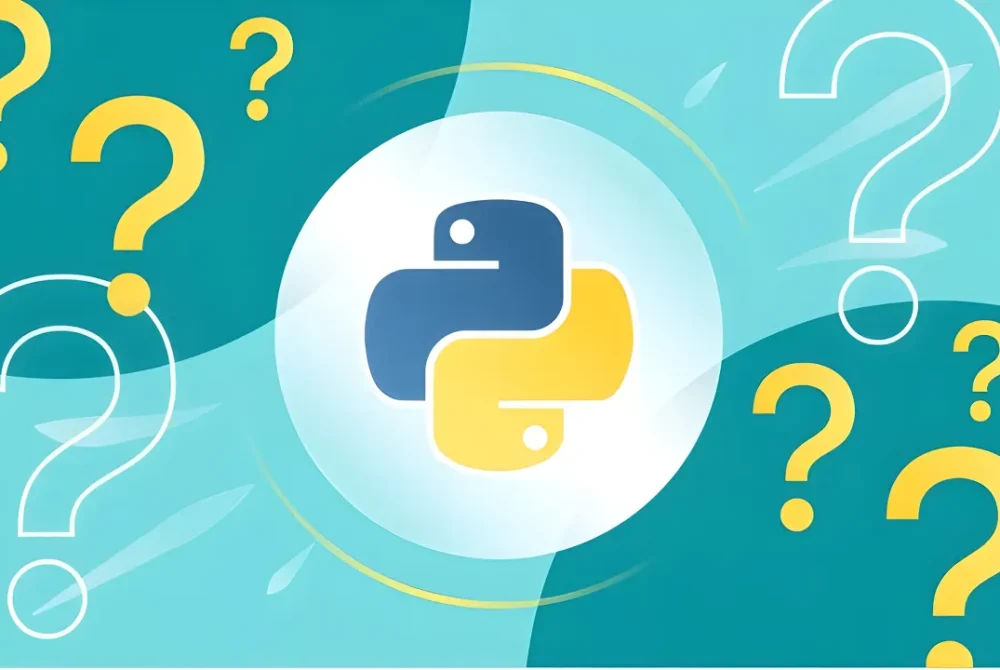Python Web Developer Masterclass: How to Build a Complete Website with Flask (Step-by-Step Tutorial)
Python has become one of the most powerful and beginner-friendly languages for web development. Whether you’re planning to build small portfolio websites or full-scale SaaS applications, Python offers a range of frameworks that make development smooth, clean, and highly scalable. One of the most popular tools in this ecosystem is Flask, a lightweight web framework that gives developers the freedom to build anything — from simple landing pages to advanced back-end applications.
In this tutorial, we break down a complete Flask project as demonstrated in the video lesson. You’ll learn how to create a website from scratch, set up routing, build HTML templates, integrate CSS, manage multiple pages, handle forms, and deploy your Python-powered site. This guide is written for absolute beginners as well as developers looking to strengthen their web development foundation.
By the end of the article, you will fully understand how Flask works, how to structure your application, and how to turn your Python scripts into real, functional websites. Everything is explained step-by-step with examples, diagrams, and best practices.
Let’s begin your journey into Python Web Development.
▶️ Here is the full video lesson: [Embed Video]
(Embed this directly in the WordPress/TechBlazes blog post.)
⭐ 3. What is Flask and Why Use It?
Flask is a micro web framework for Python — simple, fast, and extremely flexible.
🔹 Key Features:
- Lightweight & beginner-friendly
- No enforced structure (freedom to build as you want)
- Built-in development server
- Routing system
- Template engine (Jinja2)
- Easy to scale
- Perfect for learning web development fundamentals
Flask Compared to Django
| Feature | Flask | Django |
|---|---|---|
| Size | Lightweight | Full-featured |
| Flexibility | Very flexible | Structured |
| Learning Curve | Very easy | Medium |
| Ideal For | Small to medium apps, APIs | Large enterprise web apps |
⭐ 4. Setting Up Your Python Flask Environment
Before coding, install Flask.
✔️ Install Flask
pip install flask
✔️ Create your project folder
my_flask_site/
app.py
templates/
static/
Folder Purpose:
- app.py → Main Python file
- templates/ → HTML pages
- static/ → CSS, JS, Images
⭐ 5. Creating Your First Flask App
Open app.py:
from flask import Flask
app = Flask(__name__)
@app.route("/")
def home():
return "Welcome to your first Flask website!"
if __name__ == "__main__":
app.run(debug=True)
Run the server:
python app.py
Visit:
http://127.0.0.1:5000
🎉 Congrats! You created your first Python web server.
⭐ 6. Understanding Flask Routing
Routing defines which URL displays which page.
@app.route("/about")
def about():
return "This is the about page!"
Available Routes Example:
/→ Homepage/about→ About Page/contact→ Contact Page
Each route returns content or renders a template.
⭐ 7. Building HTML Templates with Jinja2
Create a template folder and add a file:
templates/index.html
<!DOCTYPE html>
<html>
<head>
<title>My Flask Website</title>
</head>
<body>
<h1>Welcome to My Flask Website</h1>
<p>This page is rendered using Flask templates.</p>
</body>
</html>
Update app.py:
from flask import Flask, render_template
@app.route("/")
def home():
return render_template("index.html")
Jinja2 Template Variables
<h1>Hello, {{ username }}!</h1>
In Python:
return render_template("index.html", username="John")
⭐ 8. Adding CSS & Static Files
Create folder:
static/css/style.css
Add CSS:
body {
background-color: #f4f4f4;
font-family: Arial;
}
Link it in your template:
<link rel="stylesheet" href="{{ url_for('static', filename='css/style.css') }}">
⭐ 9. Creating Dynamic Pages & Passing Variables
@app.route("/user/<name>")
def profile(name):
return render_template("profile.html", username=name)
profile.html:
<h1>User Profile: {{ username }}</h1>
⭐ 10. Handling Forms in Flask
Create a contact form.
HTML Form:
<form action="/submit" method="POST">
<input type="text" name="name" placeholder="Your Name">
<button type="submit">Send</button>
</form>
Flask Backend:
from flask import request
@app.route("/submit", methods=["POST"])
def submit():
name = request.form["name"]
return f"Form received. Hello, {name}!"
⭐ 11. Creating a Multi-Page Website Structure
Typical Flask structure:
my_flask_site/
│── app.py
│── templates/
│ ├── index.html
│ ├── about.html
│ ├── contact.html
│── static/
├── css/
├── js/
└── images/
Example Routes:
@app.route("/")
def home():
return render_template("index.html")
@app.route("/about")
def about():
return render_template("about.html")
@app.route("/contact")
def contact():
return render_template("contact.html")
⭐ 12. Best Practices for Flask Web Development
✔ Use Blueprints for large applications
✔ Use virtual environments
✔ Never deploy with debug=True
✔ Keep secrets in environment variables
✔ Structure your project properly
✔ Validate form data
✔ Use Jinja2 blocks to avoid repeating code
⭐ 13. Common Mistakes Beginners Make
❌ Mixing backend & front-end files
❌ Forgetting to create a templates/ folder
❌ Not linking static files properly
❌ Using global variables for database
❌ Deploying with development server
⭐ 14. Summary
In this lesson, you learned how to build a complete Python website using Flask. We covered installation, routing, templates, CSS integration, forms, and the structure of a multi-page project. Flask is one of the best ways to start your web development journey because it’s simple, powerful, and highly flexible.
You can now confidently create your own small applications and be ready to move on to more advanced frameworks like Django — or build APIs, dashboards, and complete websites.
⭐ Continue Your Training with TechBlazes
Ready to become a full-stack Python developer?
🔥 Explore our premium courses on TechBlazes:
- Python Web Developer Masterclass
- Flask & Django Bootcamp
- Full-Stack Penetration Testing
- DevOps with Docker & Kubernetes
- Linux for Ethical Hackers
- Cloud Security & Deployment
Upgrade your skills → build real projects → and launch your career.
Start learning now at TechBlazes.com 🚀

